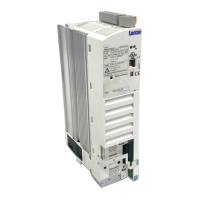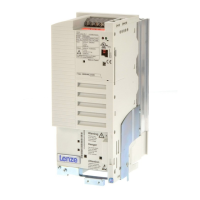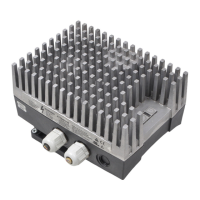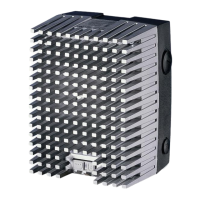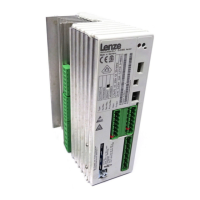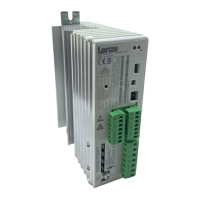Wiring according to EMC
Always observe these basic rules
10
l
EDBEMV82EV EN 3.0
3.1.1 Installation in the control cabinet
The mounting plate
z
Use mounting plates with an electrically conductive surface (zinc-coated or V2A).
z
Varnished mounting plates are not suitable even if the varnish on the contact areas is
removed. The contact areas without varnish bear the risk of rust formation.
z
If the installation is distributed among several mounting plates, the mounting plates must be
electrically connected with a surface as large as possible (e.g. with earthing strips).
Mounting of the components
z
Connect the controller and RFI filter to the earthed mounting plate with a surface as large as
possible.
z
DIN rail mounting is not suitable!
Correct cable installation
z
Control cables and mains cables must be separated from the motor cable.
z
Cross the motor cable at right angles with mains cables and control cables.
z
Optimally the motor cable is installed without interruptions.
z
Install terminals for the motor cables e.g. at the control cabinet entry with a minimum
distance from the other terminals of at least 100 mm.
z
The cables must always be installed close to the mounting plate (reference potential), as
loose cables act like aerials.
z
Install mains cables and control cables in separate cable ducts.
z
Connect shielded cable sections with the reference potential.
3.1.2 Specification of the cables used
z
The cables used must comply with the requirements of the application (e.g. UL, EN 60204-1).
z
Only use shielded cables with a braid made of tinned or nickel-plated copper. Do not use
braids made of steel.
z
The overlap rate of the braid must amount to at least 70 % with an overlap angle of 90°.
3.1.3 Shield connection
z
Connect the shields with a large surface to the EMC shield sheet on the device side.
z
Do not disconnect the shield after the contact area but continue it up to the terminals.
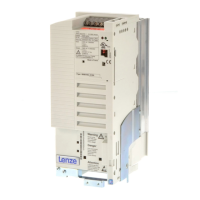
